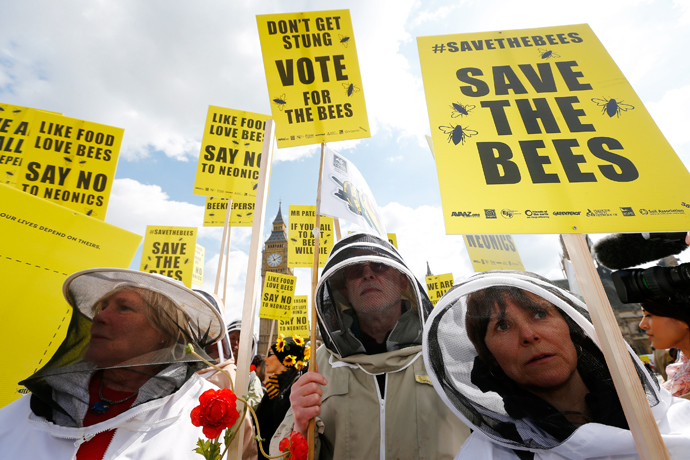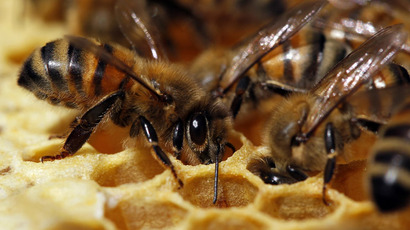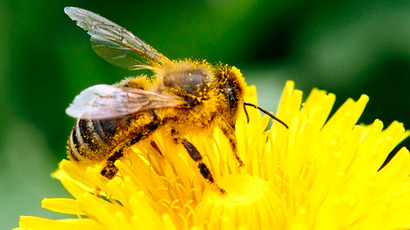EU imposes 2-year ban on pesticides believed responsible for mass bee deaths

The European Commission has adopted a two-year-long moratorium on the use of three necotinoid pesticides believed to be one of the reasons behind a 30 percent annual decrease in bee populations since 2007.
EU member-states will now have to amend their existing legislation on the use of pesticides by September 30 to comply with the ban adopted by the EC on Friday.
The substances in question are clothianidin, imidacloprid and thiametoxam, used for treatment of seeds and foliage as well as for making soil more fertile. All pose "high acute risks" for bees, according to a scientific report by the European Food Safety Authority (EFSA).
European countries have been given six months to use up their current stocks of the chemicals. Scientists will then have two years to determine whether the ban helps stop declines in bee populations, after which the restriction may be reviewed. Until that point, the pesticide ban will be upheld.
The ban is “another milestone towards ensuring a healthier future for our honeybees, as bees have two important roles to play: Not only that of producing honey but primarily to be a pollinator. About 80 percent of all pollination is due to the activity of bees – this is natural and free of costs,” according to Tonio Borg, Commissioner for Health and Consumer Policy. Bees “contribute over € 22 billion annually to European agriculture,” he added.

The European Commission forced its bee-protection plan through after it failed to get support from a sufficient majority of EU member-states in an April 29 vote: Only 15 out of 27 EU members supported the pesticides ban.
“In absence of an agreement between Member States, it is for the Commission to decide on the adoption of the proposed restriction,” a European Commission press release said.
The decision is a blow to two major necotinoids producers, Bayer of Germany and Switzerland's Syngenta, who maintain there is not enough evidence their products are contributing to the decline in bee populations.
The European Commission’s report also points to other factors that may be responsible for the mass bee deaths, include parasites, other pathogens, a lack of veterinary medicines or their misuse, apiculture management, environmental factors such as a lack of habitat and feed, and climate change. Prior to the ban, the European Commission allocated €3.3 million for research into the bee deaths.
The sharp decline in bee populations has taken place over the last 10-15 years, according to an EFSA report; scientists have labeled the phenomenon Colony Collapse Disorder (CCD).
The issue is equally acute in the US, where according
to a Department of Agriculture report, the number of colonies has
plummeted from 3 million in 1990 to 2.5 million this year.














